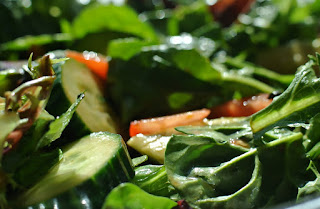Thank you National Garden Clubs! We won a Plant America Grant. This will allow us to tag/identify plants and document the wildlife that uses them. Native plants may not be as showy as cultivars, but to the animals that need them, they are a thing of beauty.
Tuesday, January 31, 2023
Friday, March 18, 2022
Partners for Pollinators
Mickey and I met with the Master Gardeners on 3/10. Mother Nature was contributing free water generously so we met at a restaurant and shared our expectations. The Master Gardeners did not have a native plant garden at the Extension Center so this was an opportunity to use our foundational skills to expand our expertise with natives, while providing a demonstration garden to educate the public and increase its appreciation of pollinators and native plants. Since the garden was in need of much attention, we decided to meet weekly for the next month or so to clean it up, document what was growing, and locate and plant needed additions.
On March 17 five of us met to start pruning, raking, and pulling dead and overgrown plants. The firebush had spread like, well, like wildfire and we decided to dig up the volunteers as soon as possible and find new owners for them. The Walters Viburnum was growing over the sidewalk and impeding pedestrians. It was doing so because it got its most consistent source of sunlight from the east (over the walkway). We decided we'd work on a drastic pruning regime - taking 1/3 of the overhanging boughs at a time until it was trimmed up to spec. We mused on ways to "train" the remaining trunks/branches to not overspread the walkway again. It was really planted much too close to the sidewalk. But who among us hasn't made THAT mistake!
The majority of the time we tidied up and pruned spent plants and foliage. We started from the western side of the garden (the entrance) and worked east through all the beds. The initial trimming stopped just at the end of the bench and across to the other fence. Big improvement!
Before we left, we identified two large ant mounds around the inside of the walkway. They would need treatment to prevent them from biting visitors. We did some research on which product had the least toxicity for other species. We compared the different products we'd used, and learned one important lesson. We were always taught to read the label for application instructions and for precautions and hazards to wildlife. But when I went to some of the materials safety data sheets and government and university information on the active chemicals, I found that the manufacturer had omitted hazards to some key wildlife: namely bees. Almost all the ingredients were toxic to bees on some level, some highly so. All were highly toxic to aquatic wildlife. Well, bee toxicity ruled out all but one product: Amdro Fire Ant Bait. It contained the ingredient hydramethylnon, which had no toxicity to bees (especially honey bees). If you are maintaining a public garden that visitors are encouraged to walk through, you can't just let fire ants colonize the area. It's a hard decision to apply pesticides to a wild habitat, and that's why it's so important to understand the risks and the proper application. Hopefully that one treatment will tame the fire ants over the summer. See the UF/IFAS publication, "Managing Fire Ants in an Urban Area."
One can never eradicate the mounds entirely, but forcing them to rebuild elsewhere gives us humans breathing room.
Note that fire ants like to colonize sandy areas that are not covered with vegetation. Digging is just easier there. But ants will colonize even a full turf grass area. Get ahead of them by applying chemicals if you need to early in the year.
By the time we finished that day, the garden looked much more cared for!
Inspecting the Garden in February
 |
| Walter's Viburnum in bloom in February (photo by John Battle) |
Before meeting with the Master Gardener Volunteers, my husband and I did a site survey to diagram the garden plots and the walkway. We also made a note of the orientation to estimate sunlight levels. We also noted some problem areas, such as fire ant mounds, unsightly vines and dead plant parts. I drew up a list of butterflies I'd seen in past years and identified host plants. Installing these plants if there were none in the garden would be a big priority.
The garden documentation is in the right column of this page. I scheduled a meeting with the Master Gardeners to give them the backgorund info and to plan our gardening schedule.
Wednesday, March 6, 2019
Helping the Planet Stay Healthy
It's March and many of us are thinking about enjoying the beach. All too often what we find on the shoreline is plastic waste: either left behind by previous visitors or washed up from litter that floats in the ocean. One of the most common plastic items is plasticware from beach picnics. Some of that litter doesn't reach the beach. Divers who have explored Belize's "Blue Hole" have found an enormous amount of litter swirling in its depths. Consider purchasing bamboo dinnerware and utensils to take with you on outings - then take them back home for your next picnic. Bamboo is washable and biodegradable, and we'll be raffling a set of bamboo dinnerware at an upcoming meeting!
Ospreys have made a global comeback thanks to human conservation efforts! Many of us who live near navigable waters are familiar with osprey nests on platforms that also serve as channel markers. Read how well this has worked to bring ospreys back from the brink of extinction at EarthSky news.
Ospreys have made a global comeback thanks to human conservation efforts! Many of us who live near navigable waters are familiar with osprey nests on platforms that also serve as channel markers. Read how well this has worked to bring ospreys back from the brink of extinction at EarthSky news.
Tuesday, February 12, 2019
Fresh Vegetables -- Spelled Y-U-M
Keep in mind that grow-your-own veggies will need more washing than the pre-washed ones you get in the store. A few cleanup procedures before eating will minimize any sand clinging to the vegetable.
Tricks and supplies for cleaning your fresh treasures:
Recipe tips:
Deborah took home a sweet potato, microwaved it, and used it as a healthy snack while she ran errands. And YES you CAN: eat the skins, that is. An average size sweet potato should be microwaved on high for around 5 minutes. Test it by sticking a fork into the flesh; if it feels moderately soft, it's ready to cool and eat. Remember that the potato will continue to cook AFTER it has been taken out of the microwave. If it's still hard, rotate the potato so the bottom is on the top (to cook it more evenly) give it another minute and test again.
Traditional southern recipes for winter greens (mustard, kale, collards) prepare them by cooking in water and flavoring the "juice" with bacon or salt pork. As a "northern girl" I prefer to saute them in a vegetable oil (adding a little water to keep them from drying out. I mix the prepared greens with sauteed sweet onions and a dash of sugar to take away some of the bitter taste. With strong-flavored mustards I add some sesame oil and mix them into an oriental stir-fry.
Arugula, it's not just for salads! The peppery taste of arugula can spice up a lot of foods. Mickey's son added it to pasta, giving this classic dish a savory kick.
Kohlrabi is a popular European vegetable. Both the stems/leaves and bulbs are edible. The leaves can be sauteed like winter greens (see above). The bulb can be cooked in water and prepared like mashed potatoes or soup, or roasted or sauteed and flavored with garlic, Parmesan cheese or herbs. Young and tender kohlrabi may be eaten raw, without peeling.
Tricks and supplies for cleaning your fresh treasures:
- Soak: Let gravity do some of the cleaning and soak the vegetable before starting any other cleaning steps. Fill a big bowl with tap water (or filtered from the tap - your preference). Then let the vegetables soak in the water for 15 minutes, then remove the vegetables from the water. For sandy leafy vegetables, such as spinach, kale, mustard, or chard, you may need to repeat this process a few times.
- Scrub: Use a vegetable brush on the plant while you rinse it off. Skip this step if cleaning leafy veggies. Some stores sell soap formulated to clean vegetables. If your vegetables are just sandy, it's probably not necessary. But if you are cooking for someone with an immune deficiency or a small child, you might want to consider this.
- Rinse and drain.
- Prepare. For the healthiest eating do NOT remove the skins. They are LOADED with vitamins. And YES YOU CAN learn to enjoy this part of the vegetable. Even carrots in a salad don't look unappetizing if you keep in mind how much the skins benefit YOU! OK, you can peel your beets and pumpkin, etc... Unless you want to cook your pumpkin pie in a shell... :) See "What Part of the Plant are You Eating (and Cooking)" for the "First Pumpkin Pie (sort of)" recipe that makes the shell part of the pie from PBS's Autumwatch series. Well, I did NOT get my husband to eat the shell, but I DID!!!!
Recipe tips:
Deborah took home a sweet potato, microwaved it, and used it as a healthy snack while she ran errands. And YES you CAN: eat the skins, that is. An average size sweet potato should be microwaved on high for around 5 minutes. Test it by sticking a fork into the flesh; if it feels moderately soft, it's ready to cool and eat. Remember that the potato will continue to cook AFTER it has been taken out of the microwave. If it's still hard, rotate the potato so the bottom is on the top (to cook it more evenly) give it another minute and test again.
Traditional southern recipes for winter greens (mustard, kale, collards) prepare them by cooking in water and flavoring the "juice" with bacon or salt pork. As a "northern girl" I prefer to saute them in a vegetable oil (adding a little water to keep them from drying out. I mix the prepared greens with sauteed sweet onions and a dash of sugar to take away some of the bitter taste. With strong-flavored mustards I add some sesame oil and mix them into an oriental stir-fry.
Arugula, it's not just for salads! The peppery taste of arugula can spice up a lot of foods. Mickey's son added it to pasta, giving this classic dish a savory kick.
Kohlrabi is a popular European vegetable. Both the stems/leaves and bulbs are edible. The leaves can be sauteed like winter greens (see above). The bulb can be cooked in water and prepared like mashed potatoes or soup, or roasted or sauteed and flavored with garlic, Parmesan cheese or herbs. Young and tender kohlrabi may be eaten raw, without peeling.
Subscribe to:
Posts (Atom)





